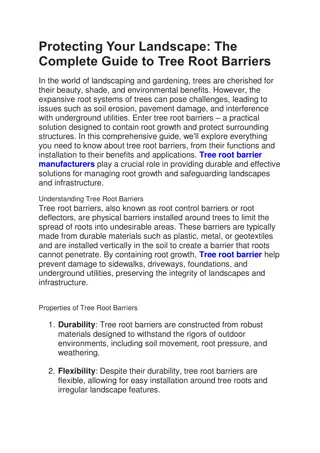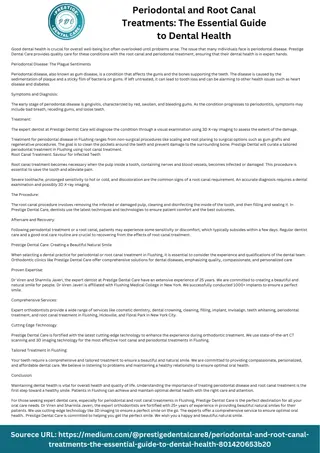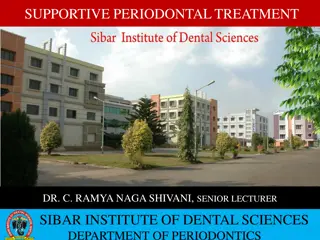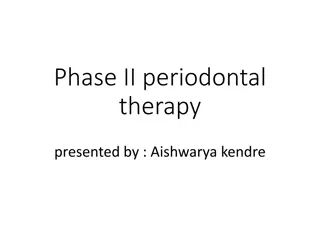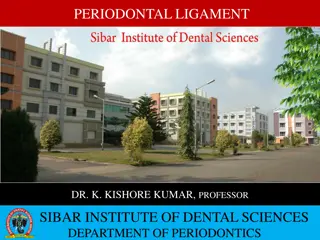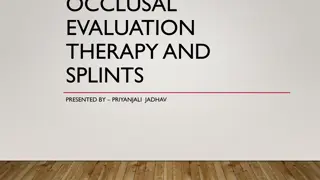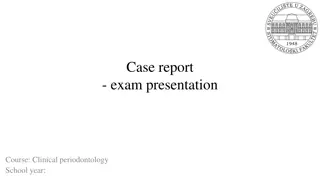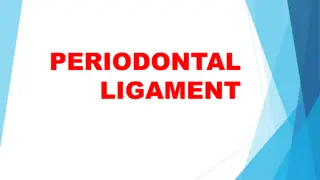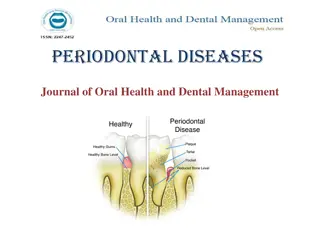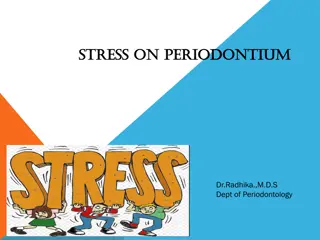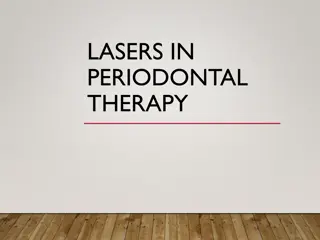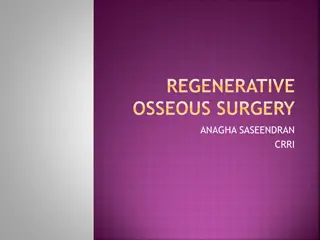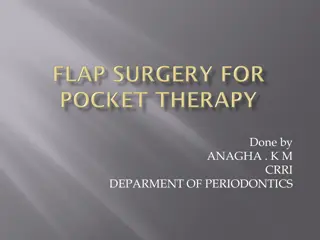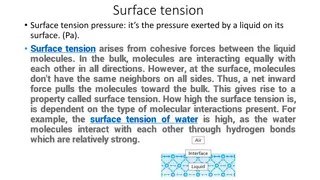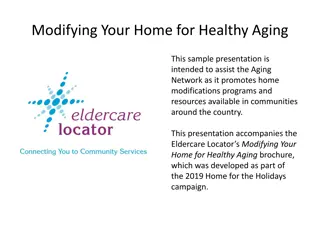Understanding Root Surface Modifications in Periodontal Therapy
Periodontal therapeutic modalities focus on root surface modifications due to periodontitis, which involves physical, chemical, and cytotoxic changes. Successful outcomes depend on factors like clot stability, cell migration, attachment, proliferation, and debridement. Analyzing cementum properties like hardness, elasticity, and roughness is essential for stem cell behavior. Traditional methods like scaling and root planing are crucial, but laser-assisted debridement is gaining popularity. Result analysis shows significant differences in surface topography after debridement, affecting the micromechanical environment.
- Periodontal therapy
- Root surface modifications
- Cementum properties
- Laser-assisted debridement
- Stem cell behavior
Download Presentation

Please find below an Image/Link to download the presentation.
The content on the website is provided AS IS for your information and personal use only. It may not be sold, licensed, or shared on other websites without obtaining consent from the author. Download presentation by click this link. If you encounter any issues during the download, it is possible that the publisher has removed the file from their server.
E N D
Presentation Transcript
One important contemplation in periodontal therapeutic modalities is the root surface which has become exposed to the oral environment as a result of periodontitis. Changes in pathologically exposed root surface are physical and chemical in nature and also become cytotoxic due to the release of bacterial toxins that get attached to the root cementum. 2
Knowing that successful periodontal therapeutic outcomes include clot stability, cell migration towards the root surface, cell attachment, cell proliferation and differentiation, debridement and preparation of a root surface play an important rule for the above- mentioned events which constitutes the rationale behind root bio-modification. 3
The most commonly analyzed properties of the cementum are hardness, modulus of elasticity and surface roughness. Way surface roughness ? Recent studies have indicated that the stem cell fate decision is strongly correlated to the biomaterial surface topography in tissue engineering and regenerative medicine. It is reported that topographic features of surface play an important role in adhesion, proliferation, differentiation, and mineralization of stem cells. \ The most conventional method includes scaling and root planing which are primarily aimed at the gross removal of cement from the root surface. According to the concepts of functional tissue engineering, the cells can sense and respond to mechanical factors and various other environmental cues of the substrate. 4
Beside this method, nowadays the laser assisted root debridement become very popular since the laser beam is capable of achieving a delicate removal of tissue. Whatever method for debridement of root surface in order to detoxify, decontaminate and demineralize is used, significant change in topography and roughness happens which has impact on many properties of the environment that they support.
THE OBTAINED RESULTS INDICATED THAT THERE ARE STATISTICALLY SIGNIFICANT DIFFERENCES BETWEEN THE MEANS OF ANALYZED AMPLITUDE PARAMETERS TEXTURE SHOWED NO DIFFERENCES BETWEEN TWO INDEPENDENT GROUPS (CONTROL GROUP VS. CALCULUS REMOVAL GROUP) WHICH MEANS THAT SURFACES CAN BE DESCRIBED AS GRADUALLY VARYING, FREE OF EXTREME PEAKS OR VALLEY FEATURES AND IN SOME WAY SUPPORTS THE PRESUPPOSE SURFACE TOPOGRAPHY AS FAVORABLE MICROMECHANICAL ENVIRONMENT . G0 G2 G1 6



